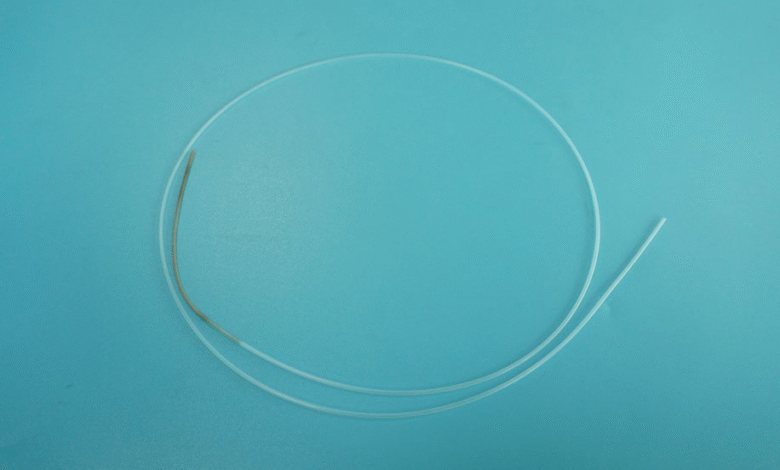How Biopsy Channels Empower Diagnostic Medical Equipment?

The field of modern medicine is precise, time-saving, and less invasive. In this pursuit, medical equipment continues to evolve rapidly, particularly in diagnostic domains. One of the most revolutionary technologies is endoscopy, which is an instrument enabling clinicians to visualize, examine, and treat internal tissues without open surgery. However, it’s not just the endoscope itself that matters — it’s the intricate components, such as the endoscope biopsy channel, that enhance its functionality and power diagnostic outcomes.
Such channels are critical in making tissue sampling possible, supporting the detection of diseases at their early onset, and helping to plot treatment protocols with surgical precision. Getting a closer look at the functioning of biopsy channels in endoscopic systems, we learn how they bring medical diagnostics to a new level and make it more significant.
Medical Equipment in Diagnostics: A Brief Overview
Medical equipment is the lifeblood of clinical diagnostics. Whether it is an imaging machine or a molecular analyzer, every device allows diagnosing a condition faster and more precisely. With the transition of medicine to patient-centered practice, the need to create small, multifunctional, minimally invasive diagnostic devices is becoming increasingly felt.
Endoscopic tools have found a niche in this changing ecosystem. They provide real-time images and tissue interactivity unlike the traditional imaging. Endoscopes, whether in gastroenterology, pulmonology or urology applications, have transformed diagnostics by their accuracy and comfort to the patient.
Part of this success is the modular design of the endoscope. Among these, the endoscope biopsy channel stands out as a silent yet vital feature. Its main role is to facilitate the collection of tissue samples and it directly facilitates diagnosis, particularly during cancer screening and monitoring of inflammatory diseases.
Endoscopy and the Art of Visual Diagnosis:
Endoscopy is an integration of optics, electronics and high performance materials used to provide internal images of exceptional clarity. It enables the doctors to visualize in real time the surface features; textures, colors, bleeding, ulcers or abnormal growths unlike the radiological imaging. This feature renders it an invaluable aid in the diagnosis of gastrointestinal disorders, respiratory disorders and genitourinary disorders.
Visual diagnosis is merely the start of it. Clinicians usually want more than a picture, they want histological evidence; a sample of the tissue to prove or disprove diseases. This is where the biopsy channel comes in.
During a standard endoscopic procedure, physicians can insert forceps or other instruments through the endoscope biopsy channel to collect samples. The smooth process of work – viewing and sampling at a time – increases the efficiency of procedures and diagnostic specificity incomparably.
In addition, endoscopy with biopsy capability helps provide patients with safer and more comfortable care experiences by reducing the necessity of numerous invasive procedures. It reflects how thoughtfully engineered medical equipment can bridge technology and compassionate care.
What is an Endoscope Biopsy Channel?
The endoscope biopsy channel is a dedicated lumen (tube) integrated into the flexible shaft of an endoscope. It is mainly used to introduce instruments such as biopsy forceps, brushes, snares, or needles, but it does not exclude the structural flexibility and sterility of the device.
The biopsy channel is usually found next to other channels (suction, air, or irrigation), and it is intended to allow easy passage of instruments. The internal diameter, friction resistance, and curvature adaptability are key factors that require extreme caution by the engineers to balance so as to provide precision and usability in live procedures.
This channel is opened at the distal end of the endoscope, just beside the camera and the light source. Such an arrangement enables clinicians to have a clear view of the target tissue when navigating biopsy instruments, which lowers the chances of causing damage and increases the precision of tissue sampling.
In more sophisticated designs the biopsy channel can have two purposes – tissue removal and insertion of therapeutic devices. This versatility decreases the time of procedure, improves patient safety and allows a broad spectrum of diagnostic uses. In effect, it turns a viewing instrument into an active diagnostic and therapeutic tool — a cornerstone of modern medical equipment design.
Integration into Medical Equipment Design:
Today’s medical equipment demands seamless integration of form and function. The biopsy channel is not an afterthought, it is an important factor in the engineering of endoscopes. Designers should make sure that this channel is accessible, durable and unobstructed over the life of the device.
The selection of material is crucial. They are made with high-grade polymers, silicone linings, and antimicrobial coatings to ensure sterility and prevent wear due to frequent insertions of the tools. Inner surfaces of biopsy channels are low friction optimized to enable tools to navigate easily through the channels without sacrificing control.
Moreover, compatibility with sterilization is essential. Biopsy channels should be able to resist autoclaving or chemical disinfection without deterioration. The engineers also mind cleaning efficiency – that these internal pathways can be properly sanitized between procedures.
In pediatric or ultra-thin endoscopes, the biopsy channel needs to be made smaller without performance loss. This is the challenge that is driving innovation in the field of microengineering and the development of biomaterials, all in the name of making endoscopy safer, more accurate and more widely available.
Innovations in Biopsy Channels and Endoscopic Tech:
The technological innovations are quickly changing the design of biopsy channels. Among the advances is the introduction of robotically controlled instruments that are fed through the biopsy channel and allow a more dexterous and precise sampling of the tissue.
Smart biopsy forceps are another upcoming technology, whereby the tools are able to analyze the quality of tissue or transmit real-time information regarding sample adequacy, thus eliminating the chances of repeat procedures. When used in combination with improved biopsy channels, these intelligent tools introduce a higher degree of efficiency and diagnostic capability to endoscopic medicine.
Innovations of materials are also remarkable. Nano-textured surfaces and bioinert coatings minimize biofilm growth and enhance cleaning effectiveness. In the meantime, multi-lumen endoscopes, which have more than a single channel to pass biopsy and deliver fluids, are getting popular, particularly in advanced procedures.
Another frontier is digital integration. Biopsy channel monitoring is available on some systems and will alert the clinician should there be blockages or resistance. Not only does this increase the safety of procedures, but it also prolongs the life of expensive medical equipment.
As these innovations gain traction, the humble endoscope biopsy channel is transforming from a simple conduit into a multifunctional, intelligent gateway — one that embodies the future of high-performance medical equipment.
Conclusion:
The size of biopsy channels can be insignificant, and the contribution to the medical diagnostics is enormous. These are precision-designed channels that enable endoscopes to transcend visual examination – allowing clinicians to obtain critical tissue samples in a fast, safe and precise manner.
In the broader context of medical equipment, the endoscope biopsy channel illustrates how specialized design, materials science, and innovation can converge to create tools that directly improve patient outcomes. With the healthcare sector moving towards minimally invasive and real time diagnostic solutions, we are likely to see even more refinements in the endoscopic systems.
Finally, the biopsy channel is essential due to its silent workmanship. It enhances the pillars of preventive medicine and clinical excellence by enabling clinicians to identify and diagnose disease in its earliest onset.




